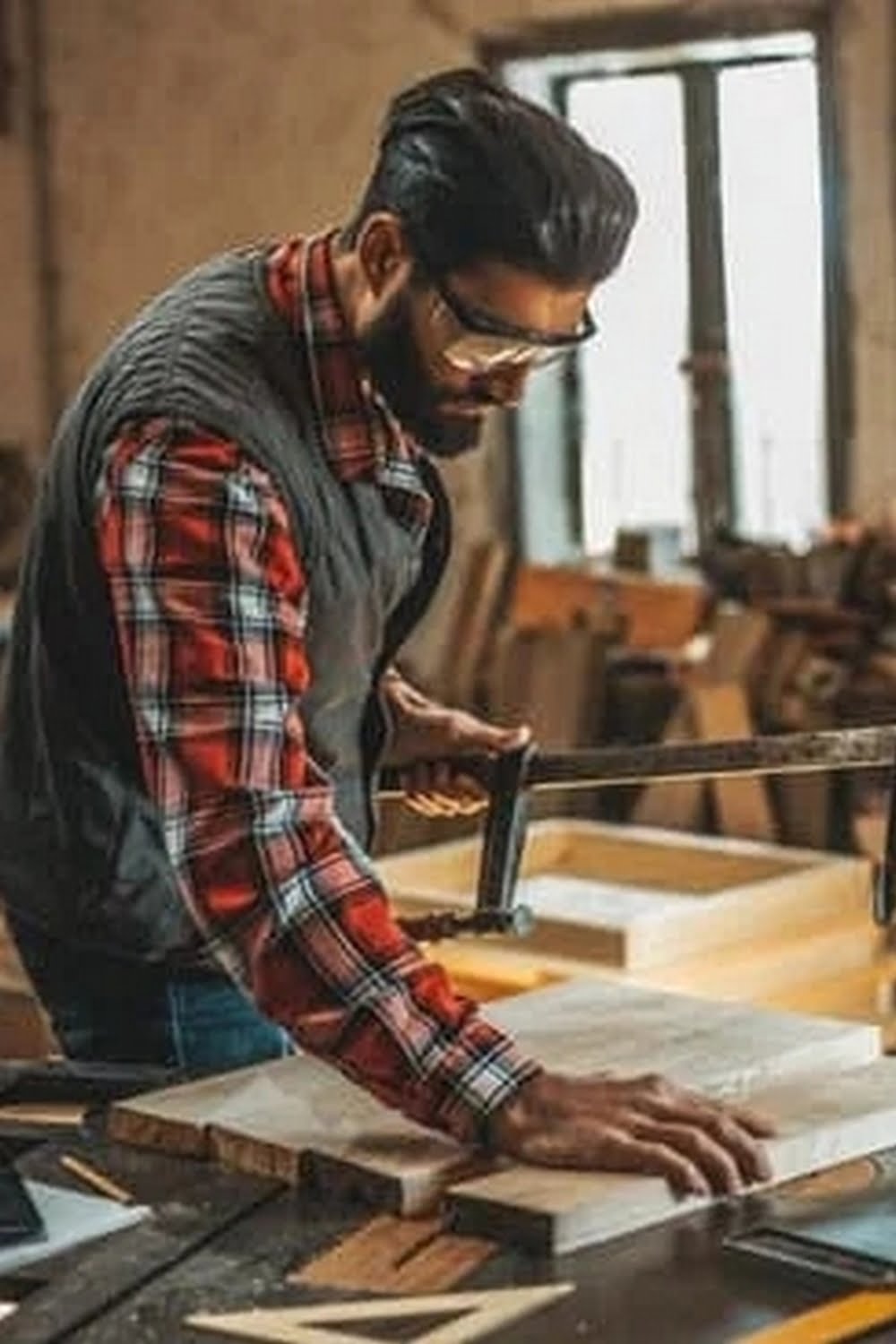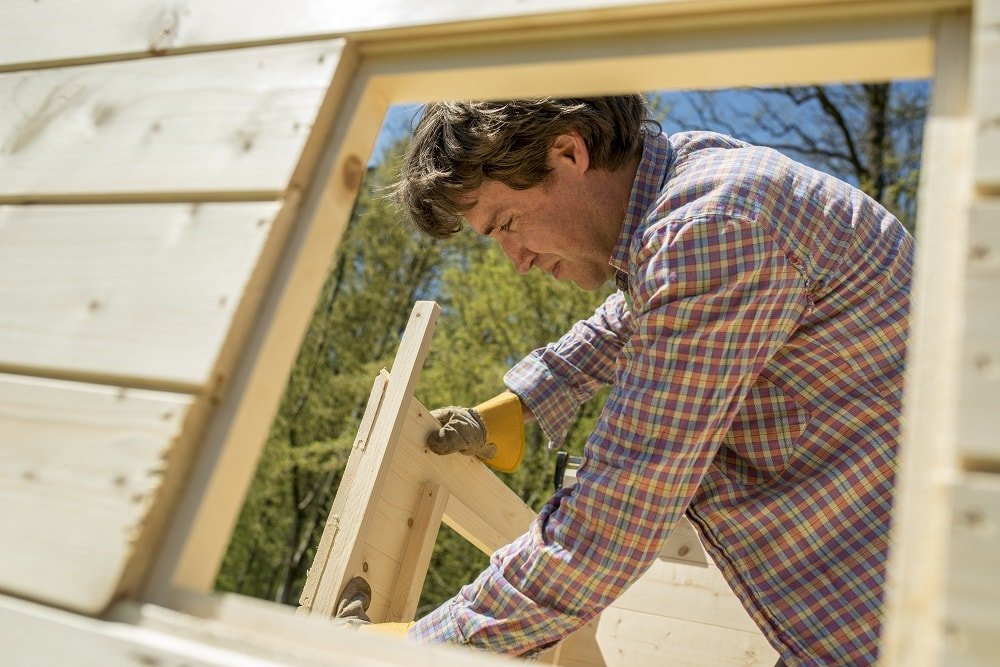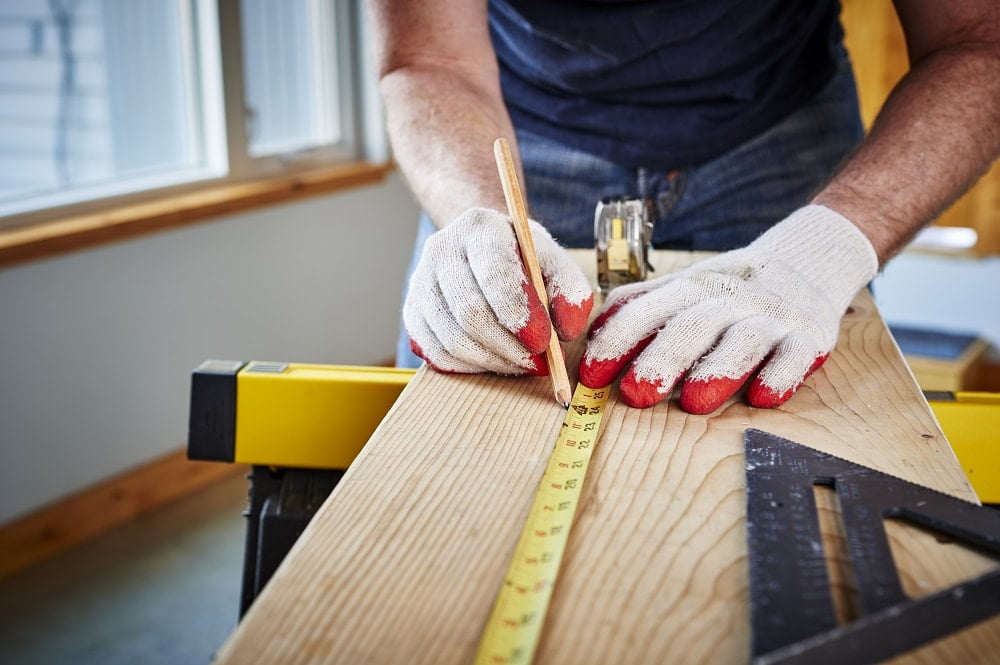Are you a woodworking enthusiast who takes pride in creating beautiful and unique pieces? If so, you may be wondering: what do you sign your woodworking projects with?
Adding a signature to your woodworking projects is not just about leaving your mark; it’s about personalizing and adding a professional touch to your work. In this article, we will dive into the history of woodworking signatures, why they are important, the different types of signatures, materials for creating them, tips for choosing the right signature, DIY techniques for creating your own, and innovative ideas for the future.
From traditional crafts to modern techniques, woodworkers have been signing their creations for centuries. This practice not only serves as a way to identify the creator of a piece but also adds an element of authenticity and craftsmanship. Whether it’s a small carving hidden in a corner or a boldly branded mark on the surface, signatures have been an integral part of woodworking history.
So why should you sign your woodworking projects? Not only does it add a personal touch to your work, but it also adds an air of professionalism. A signature can make your piece stand out and leave a lasting impression on clients and admirers alike. Whether you’re creating pieces for personal enjoyment or for sale, signing your work can elevate its value and give it that extra special touch.
History of Woodworking Signatures
Woodworking has a long history of artisans proudly signing their work, dating back to traditional crafts and continuing into modern techniques. The practice of signing woodworking projects is rooted in the tradition of master craftsmen and has evolved as a way for woodworkers to personalize their creations and add a touch of professionalism to their work.
Traditional Crafts
In the early days of woodworking, artisans would carve their initials or a unique symbol onto their finished pieces using hand tools. These signatures not only identified the maker but also served as a mark of quality and craftsmanship. This tradition is still upheld by many woodworkers today who value the personal connection between the maker and the piece.
Modern Techniques
With advancements in technology, woodworkers now have access to a variety of tools and methods for signing their projects. Engraving machines, laser cutters, branding irons, and even 3D printing can be used to create intricate and personalized signatures on woodworking pieces. These modern techniques allow for greater creativity and precision in signature design, adding a contemporary flair to traditional woodworking practices.
The Significance
The history of woodworking signatures demonstrates the pride that artisans take in their work and the importance of leaving a lasting mark on their creations. Whether through traditional carving methods or innovative modern techniques, signing woodworking projects is an integral part of the craft that reflects personalization and professionalism.
Why Sign Your Woodworking Projects
Signing your woodworking projects holds great significance, as it not only adds a touch of personalization but also elevates the level of professionalism in your craftsmanship. By adding your signature to your completed woodworking pieces, you are essentially leaving your mark and making a statement about the quality and care that has gone into creating them.
Whether you are a hobbyist or a professional woodworker, signing your projects is an essential step in cementing your identity and establishing credibility within the woodworking community.
There is a long-standing tradition behind signing woodworking projects, dating back to the early days of traditional crafts. Artisans and craftsmen would meticulously carve or engrave their signatures onto their handcrafted items as a way of showcasing their skill and dedication to their craft.
This tradition has carried through to modern times, where woodworkers continue to sign their creations as a testament to their expertise and artistry. As such, the act of signing your woodworking projects pays homage to this rich history while also allowing you to leave a lasting legacy for future generations.
Moreover, adding a signature to your woodworking projects serves as a form of self-expression and identity. It allows you to showcase your unique style and creativity, distinguishing you from others in the field. Your signature becomes synonymous with the quality and craftsmanship of your work, underscoring the pride and passion you have for what you create.
It is an opportunity for enthusiasts and customers alike to recognize and appreciate the individual behind each meticulously crafted piece. So whether you are just beginning or have years of experience, signing your woodworking projects with care will undoubtedly set you apart in the industry.
- Reasons for signing woodworking projects
- Personalization
- Professionalism
- Traditions behind signing woodworking projects
- Historical significance
- Legacy and credibility
- Self-expression through signatures
- Showcasing unique style
- Distinguishing oneself in the field
Types of Signatures
Woodworking signatures come in a variety of forms, ranging from engraved to painted. Each type provides a unique way to personalize and showcase your craftsmanship. As a woodworker, it’s important to consider which type of signature best suits your style and the specific project you’re working on.
Engraved Signatures
Engraved signatures are created by using tools such as rotary engravers or laser engraving machines. This method allows for precise and detailed signatures, making it a popular choice for woodworkers who want a clean and professional look to their projects. Engraved signatures can be made with fonts or custom designs, providing endless possibilities for personalization.
Carved Signatures
Carved signatures involve using chisels or carving tools to physically carve the signature into the wood. This traditional method adds a rustic and handcrafted touch to the project, making it a favorite among woodworkers who value the timeless artistry of woodworking. Carved signatures can range from simple initials to intricate designs, depending on the skill level and preference of the woodworker.
Branded Signatures
Branded signatures utilize branding irons to burn the signature directly into the wood. This method creates a bold and distinct mark that stands out on the finished piece. Branding is often seen as an efficient way to leave a lasting impression on your woodworking projects, especially for those who want a quick and uniform way to sign their work.
Painted Signatures
Painted signatures offer versatility in terms of color and design. Woodworkers can use painting techniques to create colorful and eye-catching signatures that complement the overall aesthetic of their projects. Whether it’s using stencils or freehand painting, this method allows for creative expression and customization in signing woodworking pieces.
Materials for Signatures
When it comes to signing your woodworking projects, there are a variety of materials and tools that can be used to create a personalized signature. The choice of materials and tools depends on the desired style and outcome of the signature. Some common options for signing woodworking projects include wood burning tools, carving tools, paints, and stains.
Wood burning tools are a popular choice for creating signatures on woodworking projects. These tools use heat to burn designs or initials into the surface of the wood, creating a permanent and professional-looking signature. Carving tools, on the other hand, allow for more intricate and detailed signatures to be carved directly into the wood. This method requires skill and precision but can result in a beautiful and unique signature for your project.
For those who prefer to add color to their signatures, paints and stains can be used to create eye-catching and personalized signatures. Paints can be applied directly onto the wood surface to create bold and colorful signatures, while stains can be used to subtly enhance the natural beauty of the wood while still adding a personal touch.
No matter which material or tool you choose for signing your woodworking projects, it is important to consider factors such as durability, visibility, and overall aesthetic when making your selection. Additionally, experimenting with different materials and techniques can help you find the perfect signature style that best represents your craftsmanship.
Tips for Choosing a Signature
When it comes to choosing a signature for your woodworking projects, there are several factors to consider to ensure that it reflects your personal style and adds a professional touch to your work. One of the first things to think about is the font of your signature. The font you choose should complement the style of your woodworking project while also being clear and easily readable. Avoid overly ornate or elaborate fonts that may be difficult to decipher.
Another important aspect to consider is the style of your signature. Whether you prefer a simple, clean look or a more decorative and intricate design, it’s essential to choose a style that resonates with you and represents your personality. Your signature should be unique and memorable, so take the time to experiment with different styles until you find one that truly stands out.
Placement of your signature is also crucial. You want to ensure that it is prominently displayed on your woodworking project without being obtrusive. Consider incorporating your signature into the design in a way that enhances the overall aesthetic appeal of the piece. Additionally, think about how the placement of your signature will affect its visibility over time, especially if the wood is subject to natural aging or wear.
Finally, keep in mind that many woodworkers choose to use their initials or a personalized symbol as their signature. This can add an extra layer of meaning and identity to your work, making it instantly recognizable as yours. Experiment with different options until you find a signature that feels right for you and enhances the beauty and uniqueness of your woodworking projects.
| Aspect | Considerations |
|---|---|
| Font | Complementing project style; readability |
| Style | Personal representation; uniqueness |
| Placement | Prominence without being obtrusive; aging visibility |
DIY Signature Techniques
When it comes to signing your woodworking projects, there are several DIY techniques you can use to create a distinctive and personalized signature. One popular method is wood burning, which involves using a wood burning tool to engrave your signature onto the surface of the wood.
This technique allows for precise and detailed signatures that are durable and long-lasting. Another option is carving, where you can use carving tools to carefully carve your signature into the wood, creating a unique and decorative touch to your projects.
If you prefer a more rustic look, branding your signature onto the wood is also an option. This involves heating a metal brand with your signature on it and pressing it onto the surface of the wood, leaving behind a burnt-in impression of your signature. For those who are artistically inclined, painting your signature directly onto the wood using specialized paints and stains can also create a beautiful and eye-catching effect.
No matter which DIY signature technique you choose, it’s important to select a style and font that best represents you and your work. Whether it’s a classic cursive script or a bold block lettering, your signature should reflect your personal aesthetic and preferences. As for placement, consider incorporating your signature into the design of your woodworking project in a way that enhances its overall appearance.
Finally, don’t be afraid to experiment with different techniques and ideas when creating your woodworking signature. The future of woodworking signatures is all about innovation and creativity, so feel free to explore new ways to personalize your work and leave your mark on each project.
| DIY Signature Techniques | Description |
|---|---|
| Wood Burning | Using a wood burning tool to engrave signatures onto wood. |
| Carving | Using carving tools to carefully carve signatures into the wood. |
| Branding | Heating a metal brand with signature and pressing it onto the wood. |
| Painting | Painting signatures directly onto the wood using specialized paints. |
The Future of Woodworking Signatures
In the world of woodworking, adding a signature to your project is a meaningful and professional way to personalize your work. From traditional crafts to modern techniques, the practice of signing woodworking projects has a rich history that conveys pride in craftsmanship and attention to detail. Whether you choose to engrave, carve, brand, or paint your signature, the act of marking your work leaves a lasting impression on both clients and fellow woodworkers.
As technology advances and new methods emerge, the future of woodworking signatures holds endless possibilities for innovation and creativity. With access to advanced tools and materials, woodworkers can explore unconventional techniques for signing their projects, such as using laser engraving or 3D printing. These cutting-edge methods not only offer precision and consistency but also allow for intricate designs that were previously unattainable.
When it comes to choosing a signature for your woodworking projects, it’s important to consider fonts, styles, and placement that reflect your personal brand. Whether you prefer a classic cursive script or a modern geometric design, your signature should resonate with the aesthetic of your work.
Additionally, thoughtful consideration should be given to where the signature will be placed on the project; it should enhance the overall design without distracting from the craftsmanship. By using quality materials and implementing careful planning, woodworkers can elevate their projects through the art of signing.
In conclusion, signing woodworking projects is not only a testament to one’s dedication to their craft but also an effective way to establish professionalism and personalization in their work. As we look towards the future of woodworking signatures, there is boundless potential for inventive techniques that will continue to push boundaries and redefine what it means to leave a mark on handmade creations.
Whether you choose traditional methods or embrace new technologies, adding a signature is an enduring symbol of pride in your work as a woodworker.
Frequently Asked Questions
What Is the Best Way to Sign a Woodworking Project?
The best way to sign a woodworking project is by using a woodburning tool to carefully etch your signature into the wood. This method ensures that your signature will be visible and long-lasting, as it essentially becomes a permanent part of the piece.
What Is the Best Way to Sign a Piece of Wood?
Signing a piece of wood can be effectively done with the use of a woodburning tool, which allows for precision and permanence in your signature. By carefully burning your signature onto the wood, you can ensure that it won’t fade or wear off over time.
How Do You Sign Wood Art?
When signing wood art, it’s best to use a woodburning tool or another engraving tool to sign your name or initials discreetly in an inconspicuous area of the piece. This allows you to personalize your work without detracting from the overall aesthetic of the art.

Hi everyone! I’m a woodworker and blogger, and this is my woodworking blog. In my blog, I share tips and tricks for woodworkers of all skill levels, as well as project ideas that you can try yourself.





